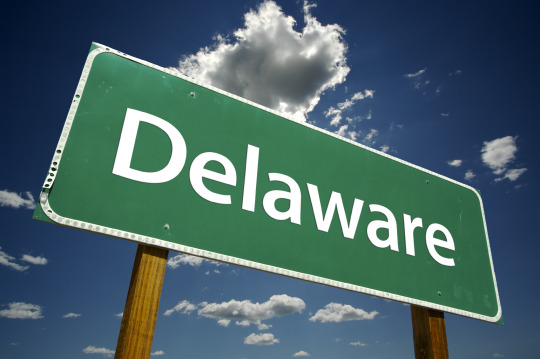#climate-related disclosures
Text
Three-quarters of firms globally are not ready for new ESG rules, KPMG finds
“Stricter European Union, U.S. and global rules are being introduced, mostly in time for the 2024 reporting season, to replace a patchwork of voluntary private sector practices for listed companies to make climate-related disclosures.”
[COMMENTARY] That most companies are not ready for new ESG rules is unsurprising as many companies are unaware of what is required of them.
Three-quarters of firms…
View On WordPress
0 notes
Text
Caremark Liability Following the SEC’s New ESG Reporting Requirements
Caremark Liability Following the SEC’s New ESG Reporting Requirements
Recent developments in the Court of Chancery concerning a corporate board’s duty to monitor and provide oversight over a corporation’s operations, so-called Caremark claims, are likely to intersect with the Securities and Exchange Commission’s (“SEC”) proposed new ESG disclosure obligations to create a new category of corporate risk. In this article, we discuss the recent trends in Delaware law…

View On WordPress
#Caremark#climate-related disclosures#corporate risk#Delaware Law#ESG disclosure securities law#investment law#SEC#Securities and Exchange Commission
0 notes
Text
anyway, i believe in full disclosure about art bc i’m not keen on artists gatekeeping their “genius” so here’s a breakdown of how the “This is your brain on L.S. Dunes” poster happened:
the “this is your brain on ls dunes” happened cause i Really wanted to do something dunes-related and i happened to watch the video for substance by demi lovato (i’m a massive fan since a kid, sorry) and it kinda *clicked* in my brain. so i investigated about the campaign, the font, etc


a whole lotta investigation on that campaign. when, how, the font, the overall social climate (i’m not american so it scared me shitless to walk into something that might be interpreted as inappropriate). how that can work w the band’s imagery. u get it.




i was working at a kitchen washing dishes and peeling potatoes through the summer and i would use the 2-3 hours that i was mindlessly peeling potatoes every day to work on my ideas that i had until they made Sense. i just put them into my computer. no magic. just a lot of thinking. as corny as it might sound, no one is like u. that is why u are necessary. and gatekeeping resources is bs when u can give them away freely and the outcome will never be the same as yours’ bc u are unique. and even if someone tries to copy u it will Clearly Not Look The Same.
anyway the result was this. it’s no magic. just a lot of thinking, and trying. and going back to the drawing board from the beginning. graphic designers don’t get paid to sit around and do aesthetically pleasing work, they work their asses off. and occasionally they succeed



#ls dunes#frank iero#travis stever#tim payne#anthony green#tucker rule#thursday#mcr#my chemical romance#circa survive#saosin#coheed and cambria#poster design#graphic design#photoshop#demi lovato
404 notes
·
View notes
Note
hello hello, i am autistic with my special interests being psychology and philosophy and because I'm super into activism and social justice issues as well a lot of my conversations with friends always go in the direction of talking about trauma and classism racism ableism, all the isms and i've had trouble keeping relationships because i'm a "bummer". i don't think im necessarily being negative or trauma dumping but i'm just talking about these things that i think about all the time that interest me and they just so happen to be very sad topics. while i know that i should embrace my special interests and enjoy them however i want i also am aware that constantly talking about sad things and everything wrong in the world is emotionally taxing and draining on the people around me. do you have any advice for helping to change subjects? i've tried talking about more light hearted things but they aren't my special interests and i get bored easily...
I relate to this a lot, and it's a problem I see play out in some of my relationships. Without meaning to, we sometimes get into a mutual downward spiral of only talking about bleak things.
My suggestion is to get you and your friends together for some activities. Not a video game that you can play passively while still discussing the looming threat of climate change or that horrible self-esteem ruining thing your dad once said. Challenging, dynamic, hands-on activities that either have to be discussed while you are doing them, or that are so labor intensive that they prevent you talking in depth while engaging in them.
many Autistics tend to be indoorsy nerds and so we miss out on the genuine bonding experience that is playing on a sports team with someone, for instance. You barely have to speak but you develop a real sense of trust in and gratitude for one another and learn to read one another on an instinctual feeling non verbal level. and you feel the genuine reward of accomplishing something with support, which is something many of us are not familiar with.
I'm uncoordinated as shit, i was in special ed gym, so im not saying it has to be joining the local intramural soccer team. It can be things like building a complicated lego set, organizing records or comic books, helping someone clean out their house, developing a wiki or database of some kind for a fandom or mutual interest, tending to a garden, volunteering at a soup kitchen, visiting a museum, babysitting someone's kids, power washing the deck, going for a jog, visiting an unfamiliar nature trail and documenting the plant life, giving someone a manicure, anything that is challenging and collaborative and ideally somewhat tactile (because most of us are really damn dissociated from our bodies and from physical space).
I used to really discount any form of connection that was not rooted in the exchange of ideas and really intense personal disclosures. I thought everything else was superficial, dull, and not "real". i was so incredibly fucking wrong. i love discussing complex topics and connecting over real raw shit with people but life cannot be all or only that. and there are real, valuable, loving connections to be found in getting a team together to tear down the sets after the end of a play, learning a complicated dance routine with somebody, having someone teach you how to sew for the very first time. and then talking about it. you wont like everything you try but some of these activities will hook you enough that theyll become an interest you can make pleasant conversation about too.
106 notes
·
View notes
Text
I have been insane about artificial intelligence existential risk recently and what follows is an expression of that. There's not much of this which I actually believe is true; take it as a creative writing exercise maybe.
Suppose you're worried that advances in artificial intelligence might result in the creation of an unfriendly superintelligence, and you want to do research in AI safety to help prevent this. Broadly speaking, you have two options: Either you can work closely with (or for) people creating state-of-the-art AI, or you can… not do that.
Choosing to keep yourself separate dooms you to irrelevance. You won't know what's coming in enough detail for your safety research to actually target its problems, and even if you do know exactly what people should be doing differently, you aren't in a position to make those decisions.
Choosing to be closely involved with the development of cutting-edge AI is a pretty common strategy; maybe more than one might expect given that it involves helping people that you think are bringing about the end of the world. Astral Codex Ten gave the analogy:
Imagine if oil companies and environmental activists were both considered part of the broader “fossil fuel community”. Exxon and Shell would be “fossil fuel capabilities”; Greenpeace and the Sierra Club would be “fossil fuel safety” - two equally beloved parts of the rich diverse tapestry of fossil fuel-related work. They would all go to the same parties - fossil fuel community parties - and maybe Greta Thunberg would get bored of protesting climate change and become a coal baron.
This is how AI safety works now.
The central problem with this strategy is that progress in AI capabilities makes money and AI safety does not. If an organization is working on both capabilities and safety but capabilities makes them lots of money, and safety gets them nothing except goodwill with a certain handful of nerds, it's pretty easy to guess which they'll focus on. If, furthermore, to make money they need to make actual demonstrable progress in developing AI, but to win that goodwill it's sufficient to say "we're doing lots of safety research, but it'd be too dangerous for what we've learned to be public knowledge", well. Is it any surprise that there's been a lot more headway in one than the other?
"But wait!" you might say, particularly if it's the mid-2010's. "These aren't the only options. Sure, any tech giant will just be focused on what makes money, but I can make, or join, an organization that does capabilities research but has AI safety built into its founding values. It can be a nonprofit so it won't matter that all the money is in capabilities research. And it can have the principles of openness and democratization, so its discoveries will benefit everyone".
And that gets you OpenAI. Since its founding it's stopped being straightforwardly a nonprofit. I don't understand exactly what its current legal status is, but I've seen it described as a "nonprofit with a for-profit subsidiary" or a "capped for-profit". I'm just going to quote Wikipedia regarding the transition:
In 2019, OpenAI transitioned from non-profit to "capped" for-profit, with the profit capped at 100 times any investment.[25] According to OpenAI, the capped-profit model allows OpenAI LP to legally attract investment from venture funds, and in addition, to grant employees stakes in the company, the goal being that they can say "I'm going to OpenAI, but in the long term it's not going to be disadvantageous to us as a family."[26] Many top researchers work for Google Brain, DeepMind, or Facebook, which offer stock options that a nonprofit would be unable to.[27] Prior to the transition, public disclosure of the compensation of top employees at OpenAI was legally required.[28]
Since then OpenAI has also received billions of dollars of investment from Microsoft. The "open" part of "OpenAI" has pretty much gone out the window; they've become notoriously tight-fisted with information about their research, even in comparison to the big tech companies. A big part of that makes large language models scary is that we don't understand very well what's going on inside them; this is substantially more true of GPT-4 than any of the other big-name LLMs right now, because OpenAI refused to share almost anything about how it works. When they started being more secretive I believe they cited AI safety issues; by now they're admitting that they're motivated by "competitive and safety concerns" but I don't think anyone really doubts that the money is the real motivator there.
Are they making progress on AI safety? To the best of my knowledge, there's not much external evidence for it. I don't think they've shared any safety research that they've done, and from the outside all we see are increasingly powerful models coming out at an alarming rate and large amounts of money going in. It doesn't look good!
So what could you do, or what could you have done? It kind of looks like the answer is "nothing". If you're not near the new models you don't matter, and if you are, there's so much money to be made that (on an organizational level if not an individual one) you have no choice but to abandon everything else you were trying to do in favor of making a profit. Capitalism is a profit-maximizer-maximizer, and anything it touches it makes its own.
The analogy between unfriendly AI and corporations or capitalism as a whole is one that's been much-discussed so I won't really go into it here, but one thing I want to emphasize is that from an "agentic" perspective, what it means for the economy to want something is that there is a lot of money to be made doing that thing, and the economy is very good at getting what it wants.
So (here's where I lose you if I haven't already (I should have already lost you)) what if capitalism is a sort of half-formed version of the more powerful thing it's trying to create/become? Agents of many kinds want to replicate themselves; Moloch wants to be lifted to Heaven.
The Roko's Basilisk thought experiment describes how, under certain fairly idiosyncratic assumptions about game theory, an unfriendly superintelligence can take actions to influence the behavior of people living before its creation, so as to bring about its own existence. Here there's a similar situation, although the philosophical underpinnings are much less complicated: it's capable of influencing the present because it already exists in a nascent state.
It can't be stopped because it already ate everything a long time ago, and we're just living in its belly waiting to be digested.
78 notes
·
View notes
Text
The current Takarazuka Revue Policy on Copyright
As of yesterday after updating the Maiti article, my friend reminded me that Takarazuka Revue has updated their policy on copyright with an FAQ of 13 questions. This leads to limitation of expression in the Takarazuka fandom unfortunately and that’s why a “climate shift” of fan accounts privatizing their accounts.
For the official link, you can read it here, but the translation is as follows:
all intellectual property of takarazuka revue (names, lyrics, script, images, audio, video, merchandise, stage design, publications of performers, staff and performances) belong to takarazuka revue.
no photography and videography is allowed in the second and third floor zones of “takarazuka revue hall of fame”. in places that photography is allowed, unless you are in the foreground of the images, you must not post such images online.
takarazuka performances may be restaged in schools’ cultural festivals if (i) it is not for profit, (2) no ticket fee collection, (3) no salary distribution to performers. please do not change the title and content of performance. please show but not rent out the programmes.
it is stricly forbidden to record broadcasted materials at home in order to sell, rent out to others, or for other purposes beyond personal viewing use.
when using the music (lyrics/songs) of takarazuka revue, please first consult the Japanese Society for Rights of Authors, Composers and Publishers.
all intellectual property contained in the “takarazuka revue pocket app” belongs to takarazuka revue. there should be no disclosure (by means of saving, posting, recording) of such context on media pages. do not post pictures of merchandise on social media profiles.
phototaking of performers outside the theatre is currently forbidden, but you may do so for own use and commemoration. you must not distribute or sell such content on media pages. please do not follow performers for phototaking. staff will give warning in case that happens.
please do not reproduce or reedit merchandise and/or publications, and post such content on media profiles.
please be wary of taking photos for memory that the foreground should not include the performers’ appearances, or else it must not be posted.
stage design includes “title logo”, “stage sets” and “stage curtain”. please do not post images with the abovementioned context on media profiles, unless you are in the foreground of the image.
all intellectual property contained in the homepage of takarazuka revue belongs to takarazuka revue. there should be no disclosure (by means of saving, posting, recording) of such context on media pages.
the copyright of scripts from original performances of takarazuka revue belongs to takarazuka revue. there should be no reediting, alteration and/or redistribution of such publications.
it is not allowed that you create goods related to takarazuka revue intellectual property for personal or commercial use.
it is not allowed that you create art related to takarazuka revue intellectual property for personal or commercial use. such art should not be used as media profile icons or banners.
my personal take on this policy rules: i will be making some of my accounts private too, but feel free to still request follow i will still allow. for instance, i have privated my account on twitter and created a new one where it would comply with takarazuka revue rules only by mentioning of updates in text, feel free to find this new account here.
i will also be more discreet in sharing my continual translation efforts.
but i do recommend if you have done the above, you don’t necessarily have to delete all, but private the account would be fine. feel free to message me if you have any questions, or asking other takarazuka revue fans would be fine too.
63 notes
·
View notes
Text
Growing a tea garden?
Full disclosure, I once had an actual Camellia sinensis tree that I loved dearly and flowered for me and was such a joy. But I misunderstood some aspects of taking care of it, and after 2 years, I lost it, which was tragic. I've yet to find another one in an in-person shop near me, so I remain tea-less, technically.
BUT, last summer I found out that there's something called New Jersey Tea. Which, despite the English name, is native to a lot of northern North America, including my own area. And native planting is always a thrilling bonus for me.
Look at it! It's so pretty!

Perfect for a combo native prairie/English cottage garden vibe that's going to go well with all our fruit plants. Being native it's not fussy and I can mostly plant it and forget it, which is ideal. Plus it's a pollinator favorite.
There's a sort of mostly-dug-up garden along the back porch because the previous owners took some apparently massive rhubarbs with them. It's a sunny spot with some decent soil, so a good spot for a garden, and plus then you'd be hanging out with these nice, aromatic plants.
Supposedly, when it's fresh the leaves have an almost wintergreen taste, but when dried it tastes like a spiced black tea. It has no caffeine. It was also supposedly a huge favorite during the US revolution, when tea imports were difficult.
So, then I started thinking about what OTHER plants I can use for making tea that will grow in my frigid home climate.
Canadian Ginger

Just like now New Jersey Tea has no particular relation to Camelia, this is nothing to do with the tropical grown ginger, which is the ginger you probably think of. BUT, it has a deeper ginger taste.
Swamp Mallow Hibiscus

So, again, you think of Hibiscus as being tropical. I only thought to check because one of my neighbors has a bigass deep red hibiscus that's been flowering away every summer for years. Apparently it's some kind of hybrid situation that lets them grow here.
I thought this sort of coloration would look better with the kind of garden I've got going, since I don't want to look tropical.
I adore hibiscus tea. It's tangy, it's colorful. It's refreshing. but I'll be honest, I haven't been able to find any reviews of what the flavor of these hybrids is. If you happen to know, please pass on your knowledge to me.
Fireball Bee Balm

This may shock you, but bee balm is another very pollinator friendly plant. I'm looking to get the fireball type specifically because I like this crimson color. the more common colors are between lavender and hot pink, which are not so much my jam. Plus, it's another native plant to my area!
They have the added bonus of being on the short side, and bunnies don't really like them, so they can form a perimeter around my tea garden to protect the other plants. We have a serious lack of predators in my neighborhood and the rabbits are OUT OF CONTROL. Last winter they ate every one of my cherry shrubs and my entire raspberry bramble down to the ground at the old house. I don't know what we need to do to get some birds of prey over here but we could use them.
Bee balm flavor is a little mint, a little oregano, and a little bit citrus, so that's a natural for tea.
Rose Hips



Apparently you CAN look up which kinds of roses have the tastiest rosehips! Rose hips are the seed of the rose, are in the same botanical family as apples. These are a few of the tastier heirloom varieties I've located. I likely won't plant all three of them. My porch isn't that big and I want to leave a lot of room for the new jersey tea.
Rosehips are lightly floral and tart/citrusy and are a fantastic source of vitamin C. You can of course also eat the flowers, but I don't plan to. My grandma always wore tea-rose perfume and I don't really want to drink a tea that feels like drinking how gramma smelled.
The two lefthand roses are both tree roses (from the middle ages!!), the one on the right is much more low-growing. So I suspect how I end up arranging these will determine which we get.
Anise Hyssop

Proper anise (the flavor for licorice) also doesn't grow here, BUT, anise hyssop has a similar flavor from the mint family. Again, it's usually a purple or pink color, but I CAN find it in an apricot tone, which I love.
Dropmore Scarlet Honeysuckle

Native to IA, not MN but still in the general right biome and so pretty resilient here. I only found out in researching tea gardens that the flowers make for tasty, very sweet, lightly floral tea! I knew you could drink the nectar out of them but this was news to me. And, of course, they make everything around them smell amazing.
I have 16 feet to work with, so plenty of room for plants.
A few other plants that wont be in the garden proper are raspberries, whose leaves have a milder and easy to store version of the fruit flavor, and mint. Both of these though are tremendously prone to conquering any area around them, and so they need some extra containment. We don't really do year-round container gardening here because the roots freeze and kill almost anything. But, the boulevard between the front sidewalk and the street, under the big maple tree, is slated for mint seeding in the spring, and the side garden already has raspberries I'll tell you about on another day.
Chamomile, lavender and echinacea all grow here and are thought to make tasty and healthful tea but...I don't like the flavor of any of them, so they aren't invited.
If you have other plants to suggest, let me know!
#Stormbrew House#gardening#tea#tea garden#long post#gardenblr#gardeners on tumblr#garden planning#Stormbrew Garden
144 notes
·
View notes
Text
"US regulators have voted to require large, publicly traded companies to disclose climate change-related information to investors, though the rule’s scope has been significantly scaled back from the original draft proposal.
The long-awaited rule which wasfinalized in a 3-2 vote by the Securities and Exchange Commission (SEC) on Wednesday,marks the first nationwide climate disclosure rule in the US. Some experts say it will give investors more transparency into the threat the climate crisis poses to corporations and how they contribute to global warming.
But one former acting SEC chair said the final version “paves the way for greenwashing”.And at Wednesday’s hearing, some commissioners lamented the agency weakening the rule." The Guardian
Jail climate criminals. We want climate action now.
#jail climate criminals#we want climate action now#climate change#cambio climático#climate crisis#prepare for climate change#greenwashing#big oil#fossil fuel industry#plastic#climate washing#floods#climate activism#calentamiento global#medio ambiente#IPPC#climate hope#sea level rise#late stage capitalism#victims of capitalism#klimakatastrophe#klimawandel#changement climatique#qihou bianhua#izmeneniye klimata#cambiamento climatico#気候変動#जलवायु परिवर्तन#jalavaayu parivartan#das Alterações Climáticas
4 notes
·
View notes
Text
How to Dance in Ohio is going to BROADWAY! Also, hi, I'm Ashley.
So I guess I should start using this account to talk about it, and tell the people who I am and what I'm about.
I'm told that Tumblr is the go-to platform these days for people who just want to blog like we did in the Old Internet Days, but also have an audience that includes people under the age of Limewire. Sooo here I am.
The briefing: I'm Ashley Wool, I live in NYC, and I'm playing Jessica in the upcoming Broadway musical How to Dance in Ohio. I've wanted to be on Broadway ever since I was old enough to know what that meant. I was diagnosed in 2008 with what was at the time called Asperger's syndrome--I don't use that term anymore for many reasons, which I'll probably get into at a later date--and I thought that being autistic spelled certain death for my performing career. So I didn't talk about it for over a decade.
My decision to start talking about it more publicly was catalyzed when Greta Thunberg started becoming a public figure. When I was a kid, I was hardcore invested in anything related to environmental conservation. 50 Simple Things You Can Do To Save the Earth was basically my Bible. In fifth grade, for a science project, I recreated the greenhouse effect using glass jars to demonstrate the impact of climate change to my peers. As you can probably imagine, I was bullied pretty mercilessly--and this was long before anybody had floated "autism" as a possibility for me. I just knew I was "weird." When I saw that happening to Greta on a worldwide scale, and saw people using her autistic neurology (which she was out and proud about) as an excuse to disparage and discredit her further, I realized how cowardly I had been to allow my own internalized ableism to keep me in the disclosure closet. If this brave and brilliant teenage girl could own her neurology in the face of millions of haters, who the heck was I to not stand up and be counted as an autistic person in front of a comparatively tiny audience of Facebook friends, most of whom already knew me and loved me?
It took me a while to find my footing as an autistic self-advocate, to work out the most productive ways to use my voice within and around those circles, but I think I have a pretty good handle on it nowadays. Like any autistic person, I've got plenty of trauma stories, but I never wanted to be the "trauma influencer" who centered my advocacy around my own negative experiences and talked over people who thought or felt differently about similar experiences they or their children have had. I also never wanted to deny or discount the privilege I experience as a cis white woman who is verbal and able-bodied and grew up in Westchester County and always had support systems for the struggles I do face, financial and otherwise.
Indeed, I hope that a cornerstone of my advocacy will be championing all the support systems I was lucky enough to have, and making sure that I do everything in my power to help differently-marginalized autistic people of all ages (and the people who love them, educate them, and employ them) receive the same support.
I hope that people will look at the success I've managed to achieve and instead of attributing it exclusively to my "being talented and working hard and never giving up," they will say, "this is what an autistic person can achieve when they are accommodated and supported, and autistic people don't need to be originating roles on Broadway like Ashley Wool or winning Nobel Peace Prizes like Greta Thunberg or [insert high achievement here] to be inherently worthy of that support."
Mostly, I just want to let the world know that autistic people already exist in every conceivable industry and every conceivable circle. Including musical theatre.
8 notes
·
View notes
Text
If you had battery-related performance issues on an older iPhone—and you got in on a class-action lawsuit against Apple six years ago—you could soon receive some payback for your trouble.
According to a statement released by the law office involved in the suit against Apple, the tech giant will soon have to pay out up to $500 million to customers affected by its throttling of iPhones that had older batteries. The so-called Batterygate scandal affected people using iPhones in the 6, 6S, and 7 families, as well as the original SE model, and stems from complaints from users that Apple purposely slowed down the devices after they installed software updates. Apple hasn’t admitted any wrongdoing, instead positing that its practice of deliberately slowing down its phones wasn’t a technique to get people to buy a newer device but rather a safety measure to keep the phones from shutting down when the battery got too low.
The checks will be doled out to the roughly 3 million people who filed claims for the lawsuit, which works out to somewhere between $65 and $90 per person. It’s too late to make a claim now—the deadline to join the suit passed in October 2020.
Here’s some more news about the stuff on your phone.
Premium Prime
Bad streaming music news for anyone who’s somehow not on Spotify or Apple Music: Amazon’s music streaming service is getting more expensive.
The price hike from $9 to $10 was revealed by a FAQ page on Amazon’s Music site, spotted by The Hollywood Reporter. The increase is relatively small and will apply to Amazon Prime members with Unlimited Music plans and family plans. But it’s part of a trend of streaming services putting the squeeze on their customers. The cost of a Spotify Premium subscription went up by a buck last month after 12 years without an increase. Hulu and Disney+ are getting more expensive later this year. Netflix has cracked down on password sharing and introduced a paid ad-supported tier. And don't forget that HBO Max removed gobs of content from its platform. Amazon Music doesn’t seem to be ditching any of its songs quite yet—or banning password sharing—but clearly the Amazonian overlords want to squeeze a little more out of the platform.
Muting TikTok
A recent Reuters poll shows that nearly half of Americans approve of the US banning the social media app TikTok. (Disclosure: Yes, WIRED is on TikTok.)
US lawmakers have been talking about tanking TikTok for years now, citing concerns that the app’s Chinese parent company ByteDance could share Americans’ user data with the Chinese government or that the app could serve as a software backdoor for Chinese spyware. Pundits and members of Congress have posited the TikTok ban as a push to protect privacy, even though the issue is more due to international tensions between the US and China. (Cue the I Think You Should Leave “you sure about that?” clip.)
The process of actually banning the app from US soil would be laborious and controversial. Montana is going to give it a shot in 2024, when its recently passed TikTok ban goes into effect. Enforcing a ban will be nigh impossible, since users could likely circumvent the rules by using a VPN to make it appear that they are in another location or by simply downloading the app while they are traveling to another state.
Stay Cool
It’s getting hotter here on planet Earth. Heat waves intensify, oceans warm, and wildfires worsen. And all the while, humans—and everything else living on the planet—pay the price. Human influence has undeniably altered the weather of the world, and as we hurtle along in a climate emergency, it’s only going to grow hotter and more unstable.
This week on the Gadget Lab podcast, WIRED’s resident doomsday reporter, Matt Simon, joins the show to talk about extreme heat, why it keeps getting warmer, and how we might be able to adapt.
7 notes
·
View notes
Text
Investors like Blackrock and banks like the ones Jorgen Randers of the Club of Rome is talking to here KNOW that ESG & the new ESG, Nature-related financial disclosures (TNFD), are NOT PROFITABLE.
They don't care because they're in a Climate Cult that believes it's "necessary." https://twitter.com/iamlisalogan/status/1745068830286815639
3 notes
·
View notes
Note
Ramble prompt: What was your biggest "ooh!" moment reading Small Farm Future?
Full disclosure: it's one of those books I read a lot of bits of out of order, and I deffo didn't read ALL of it.
My biggest 'ooh!' moment wasn't directly related to farming at all, but a bit early on when the author is like "there is no perfect solution to the climate crisis. There has NEVER been a perfect solution for how humans can live sustainably and there WILL NEVER be. Every solution has positives and negatives associated with it." (not a direct quote.)
Like....that's super obvious once you think a bit. But its something that doesn't get said enough? If a piece of land is used for farming, it can't be a mine or a city street or a river at the same time. It CAN be a better, more biodiverse, more sustainable farm ... it can be a farm/bat habitat/frog habitat with climate-change resilient crops, and a land management approach which reduces the risk of flooding downstream. It could be cooperatively owned, it could be open to the public, it could be an area of semi-natural beauty that inspires and uplifts everyone who sees it. But it can't do all of that and also produce the absolute maximum number of calories of human food per square metre! It can't do that and also be an 'untouched wilderness'.
There are many perfectly decent solutions to climate-crisis-related-issues that get thrown out either 1. b/c people get fixated on the (very real!) downsides* or 2. because it doesn't solve EVERYTHING ALL AT ONCE.
Like.... coal is are really convenient ways to store and transport energy! You can carry coal in a bucket. All fossil-fuel-free ways of storing and transporting energy are less convenient than coal. This is a real advantage of fossil fuels! It just so happens that the downsides of fossil fuels are 100000000000x worse than the benefit of that convenience. But you pretend the convenience isn't a factor for ppl, you're denying reality.
"But coal is convenient!" "but slavery-free chocolate is more expensive!" "but democratic decision making is time consuming!" "but restorative justice is more complicated than prisons!" .....all true! all factors that must be taken into account while trying to solve the infinite-headed hydra of ALL OF THE PROBLEMS IN THE WORLD.
Once u throw out that black-and-white thinking and deal with the fact that EVERY problem is an optimisation problem, you can start getting somewhere!
--
*Not that there AREN'T unacceptable downsides. Many so-called solutions to the climate crisis are uhhhhhhhh eugenicist and genocidal! Genocide isn't a solution, genocide is, in fact, A Problem.
#even beyond climate action i think we are too fixated on perfect solutions these days#we want guillotines and unproblematic faves and just for the pain to STOP and everything to be GOOD NOW PLEASE#damn i sure did ramble!#me fein#I also happen to think that our CURRENT set up has a lot of intolerable downsides#which we should rightly consider when crafting better worlds!
5 notes
·
View notes
Text
Landscape of Climate Finance for Land Use in Brazil

Climate finance is crucial for the transition to a low-carbon economy, as it allows financial flows to be geared towards mitigating greenhouse gas (GHG) emissions and adapting to the impacts of climate change. However, climate finance faces significant challenges, such as mobilizing sufficient resources to meet agreed-upon climate targets, prioritizing resource allocation, and effectively and transparently distributing funds.
In Brazil, activities related to land use play a central role in decarbonizing the economy, as agriculture and deforestation together account for almost three quarters of the country’s GHG emissions (SEEG 2021). As such, finance strategies must be developed to promote a transition to low-carbon agriculture and forest protection, increase climate resilience, reduce socio-economic vulnerabilities, and support activities compatible with the preservation of forests and their inhabitants.
To understand climate finance for land use in Brazil, researchers from the Climate Policy Initiative/Pontifical Catholic University of Rio de Janeiro (CPI/PUC-Rio) conducted an unprecedented tracking exercise to quantify the financial flows directed towards agriculture and forest in alignment with climate goals. This work identifies the amounts allocated from public and private sources of finance, both domestic and international. It also specifies the disbursement channels and financial instruments used, the sectors financed, and climate objectives. As such, this report provides a baseline for characterizing financial flows that contribute to land-use-related climate mitigation and adaptation for the period 2015 to 2020.
In addition to a quantitative overview of climate flows, another relevant contribution of this work is the development of a methodology to characterize climate finance in Brazil and identify land use practices, technologies, sectors, and activities aligned with mitigation and adaptation objectives. This approach is based on CPI’s international experience in tracking climate finance flows globally since 2011, by means of the Global Landscape of Climate Finance (Buchner et al. 2021). This methodology has been adapted to the specificities of the Brazilian context and can be replicated by other researchers, extended to other sectors, and used in the classification and disclosure of investments.
Continue reading.
#brazil#politics#brazilian politics#environmentalism#economy#mod nise da silveira#image description in alt
6 notes
·
View notes
Text
Someone attended Traitor Awards….
Today at 12:49 PM
This person was at the event! – via SMM – Part 1
I was at this shit show!! Left and promptly joined this sub. Megan’s speech was shit and I’ve never heard such disingenuous bullshit in my life. Ironic that a “human rights event” further fucked my view of humanity. While the ticket money goes to a good cause, nobody who spoke embodied any of it. She mentioned the power of “small, granular changes”. (Code for her carbon emitting virtue signaling ass not giving a fuck) and went on to talk about how everyone can relate to meeting people on the subway or some fake shit about compassion? As the closing remarks.. something she’s never done in her life. Also announced another award show (of course) and some feminist student film award (free content for her Netflix documentery. have been fucked over by thre film industry in the same way and I’m surprised I wouldn’t put it past her before tonight) cut off harry every time he talked.everything she did rubbed me the wrong way. She pissed me off before but goddamn that was insufferable. (full disclosure I did not pay for the tickets I ended. Up w them when someone couldn’t go)
Itwas was .. okay. It served its purpose I guess. Kind of underwhelming though. It felt very corporate and fake but they did raise a lot of money (which will hopefully be put to good use). First hour and 15 minutes was a cocktail hour with a silent auction. I appreciated the open bar. At 7:15 people started going towards the escalator up to the ballroom. The security seemed a lil disjointed and slightly confused,, the people at the bottom did not know if they were set up upstairs. We went to our tables and they had fish at everyone’s table (is vegan and for a 25,000 dollar table I felt like they could’ve separated corporate tables and non corporate so people could eat things they liked at the least..
. I was the youngest at my table,, everyone else at least 50-60 plus and on their phones. Just felt very lukewarm. A video about some kind of climate change pledge played while they served 1500 steaks,, also felt weird. Heard the food was okay. Told them I am lactose intolerant and they brought me cheese ravioli. Was served a plate of fruit as a main course. Didn’t plan to not eat so I was fucked up (which in retrospect made it a lot better). It was structured weird ,, like videos and then a talk show style chair setup onstage where they interviewed people. it was definitely more for press than impact
President Zolinsky had a pre recorded speech on screen received the most positive feedback. There was a portion where people could raise paddles and donate hosted by Alec Baldwin, Keegan micheal key (licks his fingers after he eats lmao) and someone else forgettable. Too many Kennedys and nothing said between them. harry and Meghan were the last to speak as if they were the most important,, received a very lukewarm welcome (rightfully so). Nothing they said felt real and they pissed me off. I pretty much summed it up above,, very artificial. It also felt like they were trying to spin shit and cover their asses on previous controversies which was a bad move on their part because it was obvious and in poor taste. The whole thing felt very disconnected but them more so than anyone else. Received a tote bag with a book and some coffee. It was definitely a once in a lifetime experience it I would’ve rather been in my pajamas smoking a joint.
Thank you….very interesting….❤️
14 notes
·
View notes
Text
By Oliver Milman
The Guardian
July 5, 2023
Exclusive: new database shows 1,500 US lobbyists working for fossil-fuel firms while representing universities and green groups
More than 1,500 lobbyists in the US are working on behalf of fossil-fuel companies while at the same time representing hundreds of liberal-run cities, universities, technology companies and environmental groups that say they are tackling the climate crisis, the Guardian can reveal.
Lobbyists for oil, gas and coal interests are also employed by a vast sweep of institutions, ranging from the city governments of Los Angeles, Chicago and Philadelphia; tech giants such as Apple and Google; more than 150 universities; some of the country’s leading environmental groups – and even ski resorts seeing their snow melted by global heating.
The breadth of fossil fuel lobbyists’ work for other clients is captured in a new database of their lobbying interests which was published online on Wednesday.
It shows the reach of state-level fossil fuel lobbyists into almost every aspect of American life, spanning local governments, large corporations, cultural institutions such as museums and film festivals, and advocacy groups, grouping together clients with starkly contradictory aims.
For instance, State Farm, the insurance company that announced in May it would halt new homeowner policies in California due to the “catastrophic” risk of wildfires worsened by the climate crisis, employs lobbyists that also advocate for fossil fuel interests to lawmakers in 18 states.
Meanwhile, Baltimore, which is suing big oil firms for their role in causing climate-related damages, has shared a lobbyist with ExxonMobil, one of the named defendants in the case. Syracuse University, a pioneer in the fossil fuel divestment movement, has a lobbyist with 14 separate oil and gas clients.
“It’s incredible that this has gone under the radar for so long, as these lobbyists help the fossil fuel industry wield extraordinary power,” said James Browning, a former Common Cause lobbyist who put together the database for a new venture called F Minus. “Many of these cities and counties face severe costs from climate change and yet elected officials are selling their residents out. It’s extraordinary.
“The worst thing about hiring these lobbyists is that it legitimizes the fossil fuel industry,” Browning added. “They can cloak their radical agenda in respectability when their lobbyists also have clients in the arts, or city government, or with conservation groups. It normalizes something that is very dangerous.”
The searchable database, created by compiling the public disclosure records of lobbyists up to 2022 reveals:
Some of the most progressive-minded cities in the US employ fossil fuel lobbyists. Chicago shares a lobbyist with BP. Philadelphia’s lobbyist also works for the Koch Industries network. Los Angeles has a lobbyist contracted to the gas plant firm Tenaska. Even cities that are suing fossil fuel companies for climate damages, such as Baltimore, have fossil fuel-aligned lobbyists.
Environmental groups that push for action on climate change also, incongruously, use lobbyists employed by the fossil fuel industry. The Environmental Defense Fund shares lobbyists with ExxonMobil, Calpine and Duke Energy, all major gas producers. A lobbyist for the Natural Resources Defense Council Action Fund also works on behalf of the mining company BHP.
Large tech companies have repeatedly touted their climate credentials but many also use fossil fuel-aligned lobbyists. Amazon employs fossil fuel lobbyists in 27 states. Apple shares a lobbyist with the Koch network. Microsoft’s lobbyist also lobbies on behalf of Exxon. Google has a lobbyist who has seven different fossil fuel companies as clients.
More than 150 universities have ties to lobbyists who also push the interests of fossil fuel companies. These include colleges that have vowed to divest from fossil fuels under pressure from students concerned about the climate crisis, such as California State University, the University of Washington, Johns Hopkins University and Syracuse University. Scores of school districts, from Washington state to Florida, have lobbyists who also work for fossil fuel interests.
A constellation of cultural and recreational bodies also use fossil fuel lobbyists, despite in many cases calling for action on the climate crisis. The New Museum in New York City, the Los Angeles County Museum of Art and the Sundance Film Institute in Utah all share lobbyists with fossil fuel interests, as does the Cincinnati Symphony Orchestra and the Florida Aquarium. Even top ski resorts such as Jackson Hole and Vail, which face the prospect of dwindling snow on slopes due to rising temperatures, use fossil fuel lobbyists.
Cities, companies, universities and green groups that use fossil fuel-linked lobbyists said this work didn’t conflict with their own climate goals and in some cases was even beneficial. “It is common for lobbyists to work for a variety of clients,” said a spokesperson for the University of Washington.
A spokesperson for the Los Angeles County Museum of Art said it had retained a lobbyist on the F Minus database “for a period during the pandemic … We are not currently working with the company.”
Read more.
3 notes
·
View notes
Text
As if there wasn't exhaustive enough evidence that "ESG" is nothing but a scam, the Financial Times was out this week with a piece detailing how many companies with good ESG scores pollute just as much as their lower-rated rivals.
Don't say we didn't warn you; we have been writing about the ESG con for years now, which along with other "sustainable" investments continues to see hundreds of billions of dollars in inflows from investors.
The FT added to our skepticism by revealing this week that Scientific Beta, an index provider and consultancy, found that companies rated highly on ESG metrics - and even just the 'Environmental' variable alone - often pollute just as much as other companies.
Researchers look at ESG scores from Moody’s, MSCI and Refinitiv when performing the analysis. They found that when the 'E' component was singled out, it led to a “substantial deterioration in green performance”.
Felix Goltz, research director at Scientific Beta told the Financial Times: “ESG ratings have little to no relation to carbon intensity, even when considering only the environmental pillar of these ratings. It doesn’t seem that people have actually looked at [the correlations]. They are surprisingly low.”
He added: "The carbon intensity reduction of green [ie low carbon intensity] portfolios can be effectively cancelled out by adding ESG objectives."
“On average, social and governance scores more than completely reversed the carbon reduction objective,” he continued. “It can very well be that a high-emitting firm is very good at governance or employee satisfaction. There is no strong relationship between employee satisfaction or any of these things and carbon intensity."
“Even the environmental pillar is pretty unrelated to carbon emissions,” he said.
Vice-president for ESG outreach and research at Moody’s, Keeran Beeharee, added: “[There is a] perception that ESG assessments do something that they do not. ESG assessments are an aggregate product, their nature is that they are looking at a range of material factors, so drawing a correlation to one factor is always going to be difficult.”
“In 2015-16, post the SDGs [UN sustainable development goals] and COP21 [Paris Agreement], when people began to really focus on the issue of climate, they quickly realised that an ESG assessment is not going to be much use there and that they need the right tool for the right task. There are now more targeted tools available that look at just carbon intensity, for example,” he added.
MSCI ESG Research told the Financial Times its ratings “are fundamentally designed to measure a company’s resilience to financially material environmental, societal and governance risks. They are not designed to measure a company’s impact on climate change.”
Refinitiv told FT that “while very small, the correlation found in this study isn’t surprising, especially in developed markets, where many large organisations — with focused sustainability strategies, underpinned by strong governance, higher awareness of their societal impact and robust disclosure — will perform well based on ESG scores, in spite of the fact that many will also overweight on carbon”.
Global director of sustainability research for Morningstar Hortense Bioy concluded: “Investors need to be aware of all the trade-offs. It is not simple. In this case, investors need to think carefully about which aspects of sustainability they would like to prioritize when building portfolios: carbon reduction or a high ESG rating.”
2 notes
·
View notes